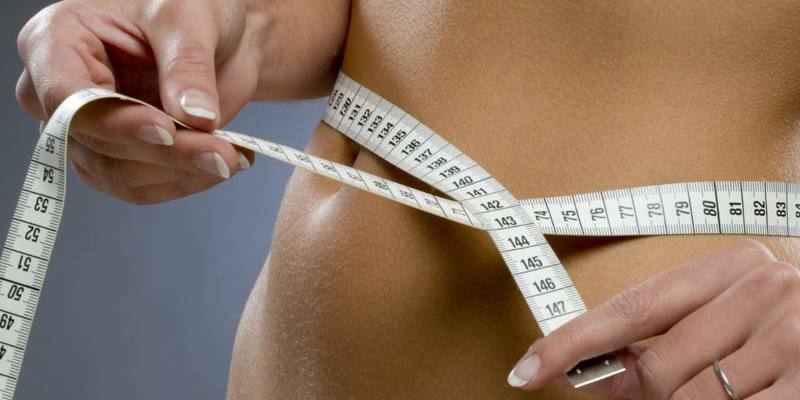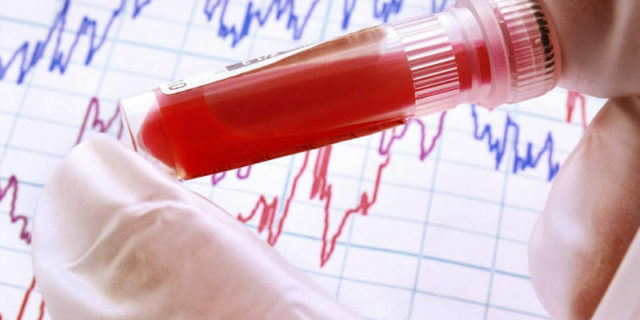
Page contents
- 1 Bilirubin levels in blood and their normal values
- 2 Features of bilirubin metabolism
- 3 Why does bilirubin increase?
- 4 Increased bilirubin in newborns
- 5 Elevated bilirubin: signs of
- 6 Types of jaundice: clinical picture of
- 7 What diseases are accompanied by an increase in the level of bilirubin?
- 8 How to take the
- test 9 How to deal with elevated bilirubin?
The level of bile components is one of the most important indicators in biochemical blood analysis. The causes of increased bilirubin in the blood can be different - a violation of the functions of red blood cells, liver and gall bladder disease, diseases of other organs that disrupt the outflow of bile.
Many people have heard about such an indicator as the level of bilirubin in the serum and they know that jaundice is the main symptom indicating an increase in its content. A few know about what factors, provoke excess of indicators and what are the consequences of such a state. About this and we will tell in our article
Indices of bilirubin in the blood and their normal values
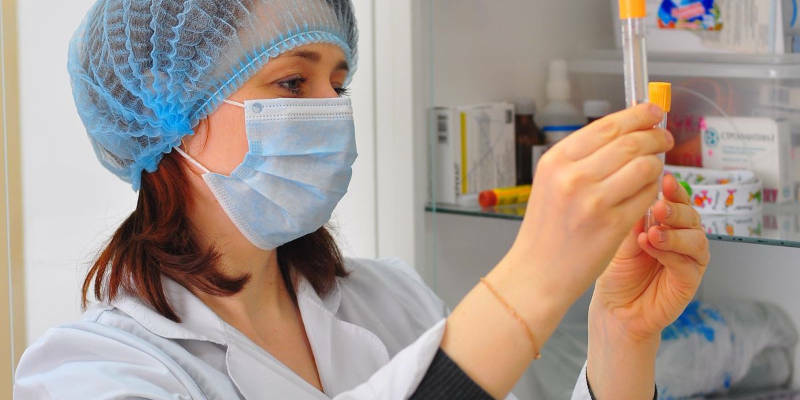
Bilirubin is a decay product of gem-containing proteins( hemoglobin, myoglobin, cytochrome).Its appearance is associated with the physiological process, namely the destruction of red blood cells that have served their term and performed the function of transferring oxygen. Bilirubin is formed in the liver, most of it is excreted with bile into the intestine, and from there it is excreted outward in a natural way with calves. Depending on the characteristics of metabolism, birirubin is released direct and indirectly. What does it mean?
Indirect( free, unbound) bilirubin is actually a bile pigment, the product of decomposition of heme substances. Normally, its level should not exceed 16.2 μmol / l. It is a toxic substance that easily passes through the cell membrane. The main biological role of the compound is the delivery of bilirubin to the liver. It is about 90% of all bilirubin circulating in the blood.
Direct( bound) bilirubin is formed in the liver when bound to hyaluronic acid. At the same time, it loses the toxic properties inherent in indirect bilirubin, is rendered harmless and is eliminated from the body naturally. In the blood, it is present in small amounts. The main biological role of direct bilirubin is participation in the formation of bile. The norm of direct bilirubin in the blood is from 0.86 to 5.3 μmol / l.
The total bilirubin is the level of bilirubin without taking into account the specified fractions. As a rule, if there is an increase in the level of one of the fractions, the indicators of total bilirubin also increase. The normal values of total bilirubin are 0.5-20.5 μmol / l.
As we see the limit, within which the level of bilirubin can fluctuate, is quite wide. Because of this, to confirm the reliability of the analysis, you sometimes have to re-take the blood for the study.
Features of bilirubin metabolism
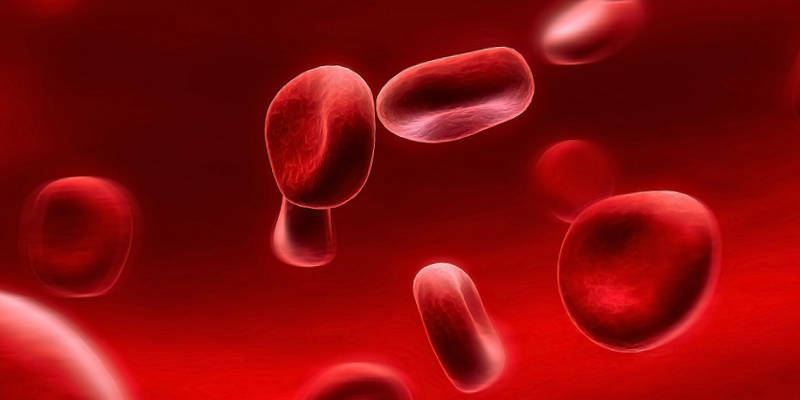
After the formation of bilirubin as a result of the destruction of erythrocytes, its metabolism in the body consists of several stages:
- In the first stage, bilirubin with blood flow is transferred to the liver, and albumin, which firmly binds the toxic compound in the blood plasma, acts as a carrier. The resulting protein-bilirubin complex can not penetrate the renal filter and does not enter urine.
- Further on the surface of hepatocytes, bilirubin is separated from albumin and penetrates into the hepatic cells.
- In the liver, free bilirubin binds to hyaluronic acid and, in such a bound state, loses toxicity and acquires the ability to dissolve in water. Now it can be freely excreted from the body with bile and urine.
- At the final stage of the metabolism, the bilirubin bound together with the bile enters the intestine, where it turns into urobilinogen and is naturally released along with the calves.
- A small amount of bilirubin is always absorbed by the intestinal wall, penetrates back into the bloodstream, then is filtered by the kidneys and excreted from the body with urine.
These are the features of the exchange and conversion of bilirubin in our body. When these processes under the influence of external or internal factors are violated, free bilirubin accumulates in the blood and shows a toxic effect.
Why does bilirubin increase?
The norm of bilirubin in the blood has quite a wide range. This is explained by the fact that the values of this indicator, including both of its fractions, can vary very much depending on various physiological and pathological factors.
Physiological elevation of bilirubin levels can occur after intense physical exertion, overeating or, conversely, prolonged starvation and compliance with rigid diets. Increased bilirubin may be a side effect of taking certain medications, including choleretic, caffeine and anesthetics.
A woman can have a high level of bilirubin during pregnancy, and this is also considered the norm. In newborns there is a significant decrease in the number of red blood cells, so the level of bilirubin in the early days is very high. As a result, many infants have a jaundiced skin after birth, which passes on its own in a few days.
A high level of total bilirubin, as a rule, accompanies any changes associated with this pigment. At present, total bilirubin is not used as an independent indicator - its diagnostic value largely depends on which fraction is increased. Increasing the level of bilirubin is always accompanied by icteric syndrome.
Increase of all three bilirubin indices
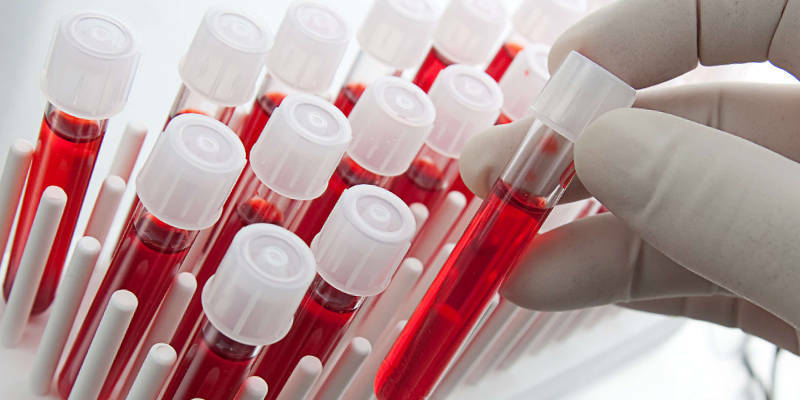
It is connected with processes of decomposition of gem-containing proteins. Elevated bilirubin in the blood in an adult will be observed in hemolysis - the destruction of red blood cells( physiological and pathological), myolysis - the destruction of muscle tissue, myositis, some injuries. With the same mechanism, the physiological jaundice of newborns is associated. Since the processes that cause the increase of bilirubin are not associated with the liver, this kind of jaundice is called superhepatic.
Increased level of indirect bilirubin is a sign of liver damage. Such jaundice is called hepatic. The total bilirubin can be normal or slightly elevated. The mechanism of occurrence of such changes is that the liver does not fulfill its functions for processing indirect bilirubin in a direct. A similar condition occurs with hepatitis of various etiologies, poisoning with hepatotoxic poisons, liver damage.
If the total bilirubin of the blood is increased due to direct bilirubin, and the indirect bilirubin is normal, this is an indicator that there is an obstacle to the outflow of bile. At the same time, its production can be normal, but because of the inability to enter the intestine, bile enters the bloodstream. The causes of this condition are cholelithiasis, spasms and anomalies in the development of the biliary tract, parasitic infestations, trauma, and tumors. This jaundice is called a liver.
Thus, the increase in any of the bilirubin fractions suggests a wide range of diseases of the liver, bile ducts or blood. In order to more accurately determine the cause, other indicators of biochemical blood analysis and various examinations are used.
Increased bilirubin in newborns
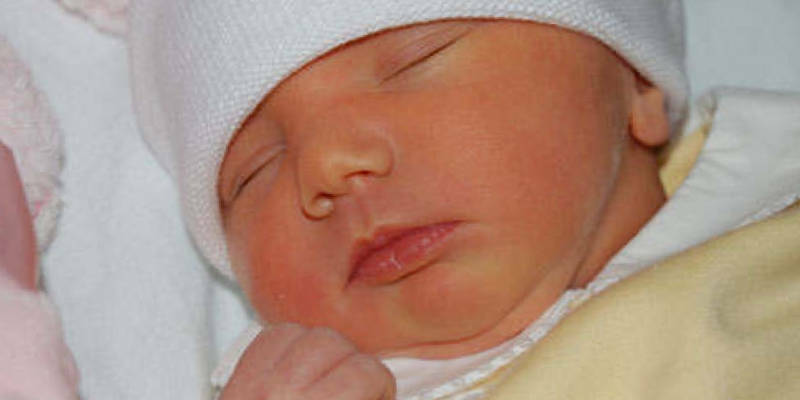
More details on the causes of increased bilirubin in newborns. The icterus in infants, appearing in the first days of life is physiological in nature and can have a different degree of severity.
As a rule, the icterus of the skin is manifested in the infant during the first 3 to 5 days of extrauterine life. And this is due to the fact that the baby's organism adapts to the new conditions of existence. During this period of time, fetal hemoglobin is replaced by "adult type" hemoglobin, which is accompanied by increased destruction of red blood cells and the formation of free bilirubin. That is why the skin of babies and sclera acquire a characteristic icteric tint.
Normally the situation is soon resolved, the liver successfully copes with the conversion of toxic compounds into bound bilirubin, which is injected from the body without harm to the baby's health.
In rhesus - conflict or in preterm and weakened children, a significant increase in the level of unbound bilirubin may occur, which increases the risk of developing nuclear jaundice. It is possible to develop severe conditions associated with the toxic effect of bilirubin on the brain. And this is already a direct threat not only to health, but also to the life of the baby, which requires intensive therapy.
Elevated bilirubin: signs of

Symptomatic of increased bilirubin is, first of all, icteric syndrome. Since the liver plays a leading role in the metabolism of bilirubin, the defeat of this organ, associated with a loss of functional ability to bind its excess, leads to the accumulation of a toxic compound in the blood and is manifested by the characteristic icterus of the skin, mucous membranes, sclera and other accompanying symptoms( skin itching, discolorationurine and feces).
Three main factors contribute to the accumulation of bilirubin in the blood:
- intensive destruction of red blood cells;
- congestion in the bile duct;
- violation of metabolic processes and elimination of bilirubin.
Accelerated decay of erythrocytes or hemolysis can be caused by a variety of causes - hereditary defects of red blood cells, infections, intoxication of the body, malignant tumors or transfusion of blood-incompatible blood.
Disturbance of bile outflow due to blockage of bile ducts by stone, parasites or tumor, congenital developmental anomalies, as well as inflammatory processes accompanied by stenosis( narrowing) of ducts contribute to the return of conjugated( bound) bilirubin to the blood. Such conditions most often occur against the background of cholelithiasis, malignant tumors of the gallbladder and pancreas, with acute and chronic pancreatitis.
Since the liver function is not violated, the level of bound bilirubin increases in the blood. There is intense itchy skin, maximal jaundice, pains in the right upper quadrant, dyspeptic disturbances( nausea, bitter eructations, stool disorders), while urine acquires a dark color, and feces become almost white.
The causes of impaired metabolism and problems with excretion of bilirubin may be a hereditary factor or diseases acquired during life. The mechanism of development of hereditary jaundice triggers diseases such as Gilbert syndrome, Dabin-Johnson syndrome or Krigler-Nayyar syndrome.
Acquired jaundice may manifest itself differently, depending on the mechanism of the underlying disease. Thus, superhepatic jaundice develops when the liver does not cope with the binding of a large amount of bilirubin formed. And parenchymal jaundice arises from diseases that damage the liver parenchyma and bile ducts. Diseases accompanied by hepatic jaundice are manifold, however, most often the cause of an elevated level of bilirubin is chronic hepatitis or cirrhosis of the liver.
Jaundice varieties: clinical picture
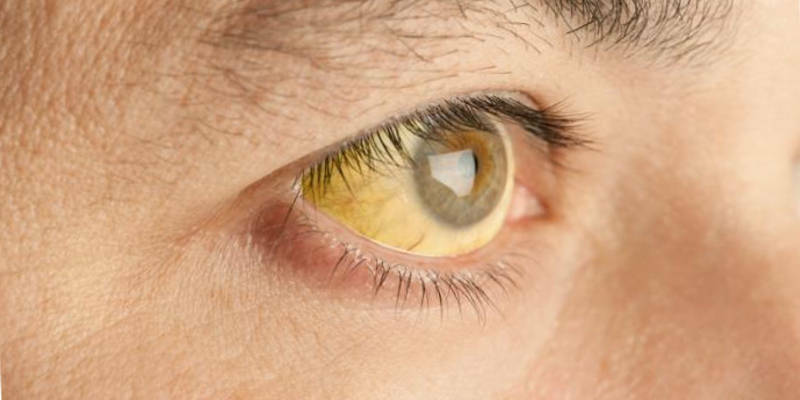
Jaundice, or icteric syndrome, is one of the external manifestations of elevated bilirubin. It is expressed in icteric shades of skin and mucous membranes, skin itching, and is accompanied by a change in the color of urine and feces( appears 3-4 days after jaundice).Distinguish the icterus syndrome from natural changes in the skin tone is quite easy - you need to look at the color of the sclera. With jaundice, the whites of the eyes acquire the same yellowish shade, and this is an indisputable diagnostic sign.
The most pronounced clinical picture of epileptic jaundice - the skin acquires a bright yellow-orange hue, the itching appears later, around the same time, the urine darkens. The color of the stool changes too - it becomes dark due to excess bilirubin. This feature allows you to reliably distinguish epileptic jaundice from its other species.
Hepatic jaundice develops slowly, accompanied by a non-intensive, but painful itching, the color of urine may not change, but the feces become lighter. Such a condition can occur for years, before the patient can pay attention to it, periodic deterioration or improvement of the condition is possible.
Bile duct jaundice is caused by the ingress of a large number of bile acids into the blood. They cause severe itching, which appears before jaundice. Jaundice is quite intense, occurs during an attack of bile stasis.2-3 days after the onset of the disease, the urine darkens, the feces become light or completely colorless.
Trying to determine the disease only by external signs, and even more so, it is impossible to prescribe the treatment of elevated bilirubin in the blood, relying solely on such data. Therefore, additional studies are being conducted to determine the exact cause of the disease.
What diseases are accompanied by an increase in the level of bilirubin?
Increased serum bilirubin level is a characteristic symptom of the following diseases:
- acute and chronic hepatitis of different etiology( bacterial, viral, autoimmune, toxic, medicinal);
- tumor processes in the liver;
- biliary cirrhosis;
- hereditary jaundice, as well as jaundice of pregnant women.
Indicators of indirect bilirubin increase with the following pathologies:
- congenital or acquired autoimmune hemolytic anemia;
- severe infectious diseases( malaria, typhoid, sepsis);
- hemolytic anemia, developing on the background of taking medications;
- hemolytic anemia, which is based on toxic damage to the liver with toxic chemicals, heavy metal salts, and also as a result of snake bites or the use of poisonous fungi.
How to take the
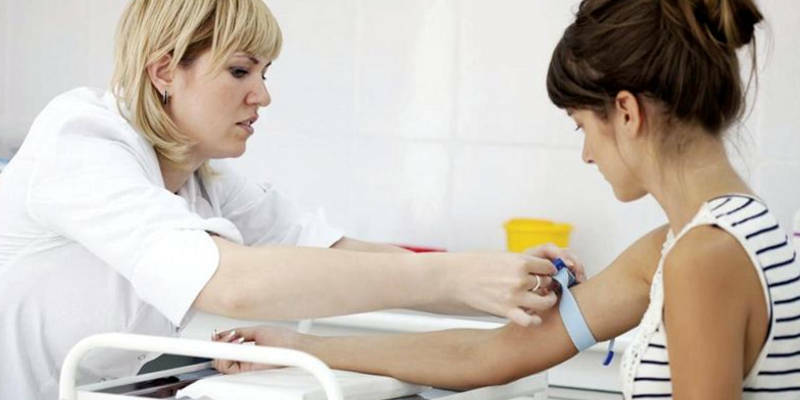
test The procedure for taking a biochemical blood test is quite simple. The patient must donate blood from the vein. The result of the study will be known in 2-3 days, depending on the workload of the laboratory. If the indicators go beyond the norm, the doctor will prescribe additional studies to find out why the total bilirubin in the blood is elevated. In some cases, a repeated blood test is necessary. In intensive care units and intensive care units, biochemical analysis is taken from patients every day to track the dynamics of the condition.
Preparation for analysis is somewhat more complicated. To begin with, the patient needs to inform the doctor about what medications he is taking and how long the course of treatment lasts. If among them there are hepatotoxic agents, the analysis is prescribed 2 weeks after the end of the course of treatment. Two weeks before the blood donation for the study, it is necessary to refuse the use of painkillers and cholagogues, as well as from coffee and other caffeine-containing drinks.
4-5 days before the analysis you need to limit physical activity - an increased total bilirubin in the blood of a man can be caused by this factor. From the diet it is necessary to exclude fried and fatty foods, smoked products, to limit the calorie content of food. The last meal should be 10 hours before the laboratory test, and blood must be given on an empty stomach so that the result is most accurate.
How to deal with elevated bilirubin?

Elevated bilirubin in the blood - what does this mean for the patient? Exceeding this indicator is a direct confirmation of unfavorable changes in the state of health. The patient will need to undergo an additional series of tests to find out which of the many reasons caused the change in laboratory parameters. Since bilirubin exists in two different fractions, each of which has its own diagnostic value, it is important for the doctor to determine the tactics of treatment before the eyes of the general picture, and not just the data of one analysis.
Methods for treating elevated bilirubin in the blood, directly depend on the causes that cause the change in the indices. Therefore, the methods of therapy are primarily aimed at treating the underlying disease. Correctly chosen tactics of treatment will allow to cope with the disease and eliminate the main manifestation of pathology - icteric syndrome and other unpleasant manifestations.
If bilirubin levels are increased due to hemolysis of erythrocytes, plasmapheresis is involved, infusion therapy based on the administration of albumin and glucose is performed. In certain situations, the use of drugs that enhance enzyme activity of the liver is indicated.
In case of newborn jaundice an effective method of treatment is phototherapy, which facilitates the transformation of toxic free bilirubin into a bound one, which is well excreted from the body.

